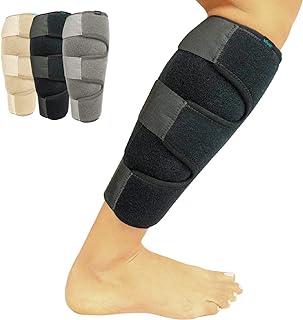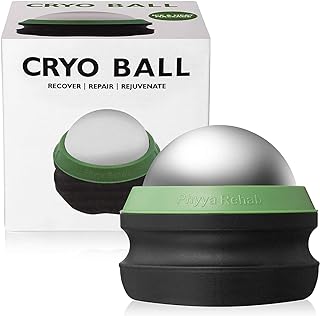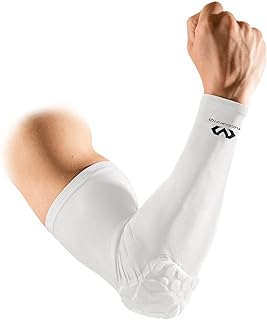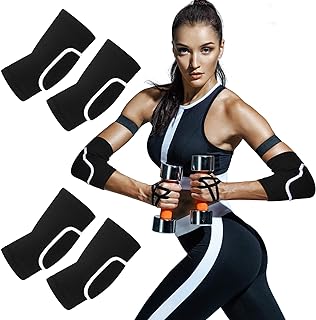5 important factors worth considering when looking for the best calf support for torn muscle
When deciding whether to buy calf support for a muscle tear, it’s important to consider various factors to help with healing. Factors like how tight the support is and if the material lets air in are important for recovery and avoiding more injuries. Choosing the best calf support is not just for practicality, it shows a commitment to one’s health and healing process. By looking into these important factors, the main goal is to find the best support for a quick return to health and strength.
See our guide to the best calf support for torn muscle.
Material and breathability
When you’re looking to buy calf support for a torn muscle, it’s important to consider the material and breathability. Choosing a quality material that is both durable and flexible can make a big difference in how well the support helps with recovery. Look for calf supports made from breathable fabrics like neoprene or moisture-wicking materials to make sure you stay comfortable and well-ventilated while using it. These materials provide compression, allow air to flow properly, and prevent sweat buildup and discomfort.
Picking a calf support with a breathable design can speed up healing by improving circulation and reducing inflammation in the injured area. Plus, materials that wick away moisture can help keep your skin dry and irritation-free, so you can wear it for longer periods without sacrificing comfort. It’s important to invest in a calf support that focuses on both material quality and breathability to get the best support and comfort while you recover. Remember, choosing the right combination of material and breathability can make a big difference in your journey to healing a torn calf muscle.
Compression level
When you’re looking to buy calf support for a torn muscle, the level of compression is really important for your recovery. Choosing the right level of compression can make a big difference in how well you heal and how comfortable you feel while using the support. Higher compression levels give more stability and support to the injured area, which can reduce swelling and improve blood flow for faster healing. On the other hand, lower compression levels may not provide enough benefit and could slow down your recovery. That’s why it’s important to pick a compression level that matches how severe your injury is and what feels comfortable to you, so you get the most out of the calf support.
It’s also important to know that there isn’t one compression level that works for everyone. Each person’s body and injury are different, so it’s a good idea to assess your specific situation before making a decision. Talking to a healthcare professional or sports medicine expert can help you figure out the best compression level for your torn calf muscle. By customizing your calf support to fit your needs, you can make sure you recover well and feel comfortable, so you can get back to your activities with confidence and fewer setbacks. Remember, choosing the right compression level now can make a big difference in how well you heal later, so it’s worth investing in the right support for your journey back to full strength.
Size and fit
When choosing a calf support to help heal a torn muscle, it’s crucial to focus on the size and fit. Getting the right size ensures that the compression is effective and promotes good blood flow for faster healing. A snug but comfortable fit is important to prevent the support from slipping or causing discomfort while you go about your daily activities confidently. It’s essential to prioritize a well-fitting calf support to get the most out of its healing benefits and properly support the injured muscle.
Selecting the right size and fit for your calf support not only affects how well it works but also impacts your comfort and mobility during recovery. A properly fitting support can provide the stability and compression needed to reduce pain and swelling, helping you recover faster. By taking the time to choose a calf support that fits you well and gives you the right amount of compression, you’re actively working towards a smooth recovery. Remember, paying attention to details like size and fit is just as important as following the overall treatment plan on the road to healing.
Durability and quality
When you’re looking to buy calf support for a torn muscle, it’s important to focus on getting a durable and high-quality product. A good calf support provides effective compression and stability, making sure you recover well while staying comfortable. While a top-notch calf support may cost a bit more, the benefits are worth it in the long term. It will help you heal faster and prevent further injuries, saving you time and money in the end.
Cheap calf supports wear out quickly, losing their ability to compress and leaving your muscle vulnerable to strains and discomfort. On the other hand, quality calf supports are made with breathable materials that help air flow and prevent sweat buildup. This not only makes them more comfortable to wear but also reduces the risk of skin irritation, allowing you to wear them for longer periods.
By choosing a durable and high-quality calf support for your torn muscle, you’re not just buying a product – you’re investing in your well-being. It ensures you have reliable and effective support on your journey to recovery.
Ease of washing and maintenance
When choosing calf support for a muscle injury, it’s important to consider how easy it is to clean and take care of. Dealing with an injury is tough enough, so you don’t want a complicated support system adding to your daily challenges. Opting for a calf support that is simple to clean not only helps with hygiene but also extends the life of the product. This might not seem like a big deal, but it can really make a difference in your recovery.
Choosing a durable and easy-to-care-for calf support can greatly help with your rehabilitation. Look for materials that provide good compression and support while also being easy to wash. A product that can handle frequent washing without losing quality or shape will save you time and give you peace of mind about hygiene. When you’re dealing with an injury, convenience should be a top priority. Choosing an easy-to-clean calf support is a smart move for a smoother recovery process.
Conclusion
When it comes to recovering from injuries and getting back to normal, calf support is really important for torn muscles. It helps by giving targeted pressure and stability to the injured area, which is key to healing and getting better. Calf support can help reduce pain, swelling, and improve blood flow, making it a crucial part of the healing process. Using calf support not only helps with physical healing, but also boosts confidence and mental strength, making it easier to get back to everyday activities and sports. By making calf support a central part of our recovery plan, we can speed up the healing process and get back to feeling strong and healthy.



